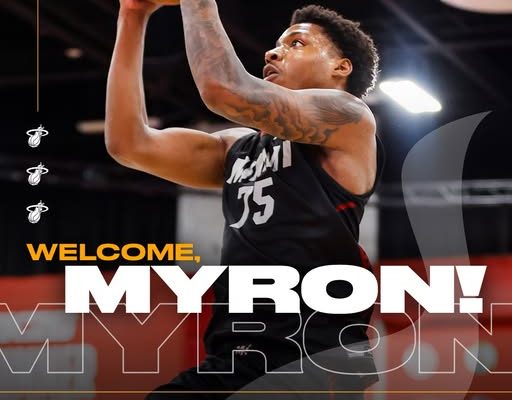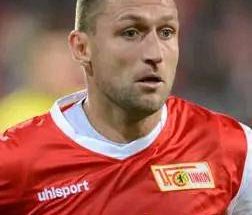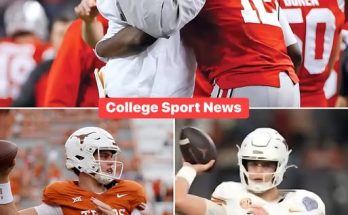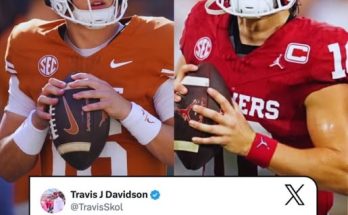The Miami Heat, a franchise renowned for its shrewd player development and ability to unearth diamonds in the rough, have once again made headlines with their latest signing. Following an impressive showing at the NBA Summer League, the Heat officially inked forward Myron Gardner to a two-way contract. This move isn’t just a minor roster adjustment; it’s a strategic play that underscores the evolving landscape of NBA team building and the vital role of the G-League.
For casual fans, a two-way contract might seem like a mere footnote amidst blockbuster trades and star signings. However, for teams like the Heat, and for aspiring young players like Gardner, these contracts represent a crucial pathway to the NBA. To truly appreciate the significance of this signing, it’s essential to delve into the intricacies of the two-way contract system, the value of Summer League, and the Heat’s philosophy of player development.
Understanding the Two-Way Contract: A Bridge to the NBA
Introduced in the 2017-18 NBA season, the two-way contract system was designed to bridge the gap between the NBA and its developmental league, the G-League. Prior to this, players either had a standard NBA contract or a G-League contract, with limited flexibility for movement between the two. The two-way deal fundamentally changed this dynamic.
What is a Two-Way Contract?
At its core, a two-way contract allows a player to split their time between an NBA team and its G-League affiliate. This means the player is on the NBA team’s extended roster but spends the majority of their season developing and playing in the G-League.
Key Features and Benefits:
- Roster Expansion: Each NBA team is permitted to have up to three players on two-way contracts, in addition to their standard 15-man roster. This effectively expands the overall roster size to 18 players, providing teams with more flexibility and depth.
- Dual Salary Structure: The “two-way” aspect refers to the salary structure. Players on these contracts earn a higher, NBA-level salary when they are with the NBA team and a lower, G-League salary when they are with the affiliate. While not as lucrative as a standard NBA minimum contract, it’s significantly more than a traditional G-League salary, offering financial stability and motivation for development.
- Limited NBA Days/Games: Under the current Collective Bargaining Agreement (CBA), two-way players are typically limited to spending a certain number of days or games (currently 50 active games, excluding G-League showcase games) with their NBA team during the regular season. If a team wishes for a two-way player to exceed this limit or participate in the NBA Playoffs, their contract must be converted to a standard NBA deal, which then takes up one of the 15 main roster spots.
- Waiver Exemption: A significant advantage for teams is that players on two-way contracts can be moved between the NBA team and its G-League affiliate without having to clear waivers. This provides crucial flexibility, especially for managing injuries or scouting developing talent.
- Developmental Pathway: For players, the two-way contract offers a clear, structured pathway to the NBA. It provides a platform to refine their skills against high-level competition in the G-League, while also getting exposure to NBA practices, coaching, and potentially game time. It’s an investment by the team in the player’s long-term potential.
- Eligibility: Generally, only players with three or fewer years of NBA service are eligible to sign two-way contracts. This ensures the system is primarily used for developing young talent rather than retaining established veterans.
In essence, the two-way contract is a strategic tool for NBA franchises to cultivate talent without committing a full roster spot and salary, while offering promising prospects a legitimate chance to prove their worth and earn a full-time NBA role.
Summer League: The NBA’s Proving Ground
The NBA Summer League has grown exponentially in importance over the years, transforming from a casual post-draft exhibition into a high-stakes proving ground for rookies, undrafted free agents, and G-League hopefuls. For teams, it’s an invaluable opportunity to:
- Evaluate Draft Picks: See how their recent draft selections perform against professional competition.
- Unearth Undrafted Gems: Many future NBA rotation players and even stars (like Fred VanVleet) have emerged from undrafted status after strong Summer League performances.
- Assess G-League Talent: Players already in the G-League system get another chance to showcase their growth and readiness for the NBA level.
- Test New Strategies: Coaches often use Summer League to experiment with new offensive or defensive schemes.
- Build Team Chemistry: Even in a short span, players get to learn about each other and the team’s culture.
For players, Summer League is often their biggest chance to impress. It’s a high-pressure environment where every possession, every rebound, and every defensive stop is scrutinized. A standout performance can lead to a two-way contract, an Exhibit 10 deal (a lesser, non-guaranteed contract with a G-League bonus), or even a direct training camp invite. Myron Gardner’s signing is a direct testament to the power of a strong Summer League showing.
Myron Gardner: The Heat’s Latest Project
Myron Gardner’s journey to a two-way contract with the Miami Heat is a classic example of persistence, growth, and seizing an opportunity. While the specifics of his collegiate career and G-League journey before this Summer League are important context, his performance in the recent Summer League was the catalyst for this signing.
Reports indicate Gardner was a true standout for the Heat’s Summer League squad, displaying a versatile skillset that caught the eye of the Heat’s notoriously discerning coaching staff and front office. Averaging impressive numbers across points, rebounds, assists, and steals, and doing so with efficient shooting percentages, he demonstrated a well-rounded game. Crucially, his ability to convert on a high percentage of his three-pointers and free throws speaks to an offensive reliability that is highly valued in today’s NBA.
For a player who has already spent time in the G-League (reportedly with the Orlando Magic’s affiliate, the Osceola Magic), this two-way contract represents a significant step up. It’s not just about the financial bump; it’s about the stamp of approval from an NBA franchise known for its rigorous development program.
The Miami Heat’s Development Pedigree: “Heat Culture” at Work
The Miami Heat organization under Pat Riley and Erik Spoelstra has built an enviable reputation for player development. They don’t just draft and sign stars; they consistently identify undervalued talent, cultivate it, and mold players into integral parts of their rotation. This philosophy, often encapsulated by the term “Heat Culture,” is about more than just basketball skills. It emphasizes:
- Work Ethic: Unwavering dedication to improvement, both on and off the court.
- Grit and Resilience: The ability to push through adversity and perform under pressure.
- Accountability: Taking ownership of one’s role and performance.
- Versatility and Adaptability: Players are encouraged to expand their skill sets and be able to contribute in multiple facets of the game.
- Defensive Prowess: A fundamental commitment to high-level defense.
- Team-First Mentality: Sacrificing individual glory for the collective good of the team.
Many players have flourished within this system, exceeding expectations and solidifying their place in the league. Think of undrafted players like Udonis Haslem, Tyler Johnson, Duncan Robinson, Max Strus (before his departure), Gabe Vincent (before his departure), and more recently, the continued development of players like Caleb Martin. Even drafted players like Bam Adebayo and Tyler Herro have seen significant growth under the Heat’s tutelage.
For Myron Gardner, joining the Heat on a two-way deal means immersing himself in this demanding but rewarding environment. He will likely spend significant time with the Heat’s G-League affiliate, the Sioux Falls Skyforce, where he’ll receive individualized coaching, extensive practice time, and opportunities to apply what he learns in live game situations. The connection between the Heat and the Skyforce is seamless, ensuring that the developmental principles and strategies are consistent across both levels.
What This Signing Means for the Heat’s Roster and Future
The signing of Myron Gardner fills one of the Heat’s available two-way roster spots. The Heat already have Vladislav Goldin, another intriguing prospect who impressed in Summer League, on a two-way deal, and there might be one more spot to fill. This proactive approach to filling these developmental slots indicates the Heat’s continued commitment to nurturing young talent and building future depth.
Gardner’s potential fit with the Heat is intriguing. His reported versatility, especially his defensive capabilities and improved shooting, aligns well with the Heat’s identity. In an NBA where multi-positional players who can defend multiple positions and knock down shots are highly coveted, Gardner brings valuable attributes. While he’s unlikely to be an immediate impact player for the main roster, his presence adds competition in training camp and provides a crucial safety net for injuries or unexpected roster changes throughout the season.
Furthermore, this signing demonstrates the Heat’s long-term vision. They are not just focused on the upcoming season but are continually scouting and investing in players who could become future contributors. The two-way contract is a perfect mechanism for this, allowing them to retain control over a promising player’s development without the immediate cap implications of a standard contract.
The Road Ahead for Myron Gardner
For Myron Gardner, the hard work truly begins now. The two-way contract is an invitation, not a guarantee. He will be expected to:
- Maximize G-League Time: Dominate in the G-League, showcasing consistent improvement in areas identified by the Heat’s coaching staff. This includes refining his offensive game, becoming an even more impactful defender, and demonstrating high basketball IQ.
- Embrace “Heat Culture”: Fully commit to the team’s demanding physical and mental standards. This means embracing the intense practices, the focus on conditioning, and the relentless pursuit of excellence.
- Be Ready for the Call-Up: Any opportunity to join the main Heat roster, whether for practice or limited game action, will be a chance to make a lasting impression. He will need to be prepared to step in and contribute immediately, even in a small role.
- Stay Healthy: Longevity and availability are key, especially for developing players.
Many players on two-way contracts eventually transition to standard NBA deals, either with their original team or another that has taken notice. The success stories are numerous and serve as inspiration. For Myron Gardner, this signing is a significant milestone, a clear indication that he is on the right track.
Conclusion: A Testament to Smart Roster Building
The Miami Heat’s decision to sign Myron Gardner to a two-way contract after his impressive Summer League performance is a microcosm of their successful organizational philosophy. It highlights the strategic importance of two-way deals in modern NBA roster construction, the continued relevance of Summer League as a talent incubator, and the Heat’s unwavering commitment to developing players through their vaunted “Heat Culture.”
As the NBA season approaches, Myron Gardner will embark on a journey that balances G-League dominance with NBA readiness. His success, like that of many Heat developmental projects before him, will be a testament not only to his individual talent and dedication but also to the Heat’s unparalleled ability to find, cultivate, and maximize potential from within. Keep an eye on Gardner; he’s the latest promising piece in the Heat’s ever-evolving puzzle.



